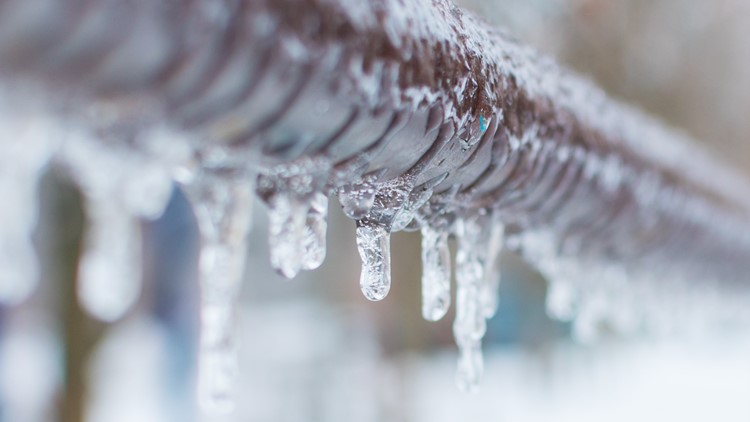Tips to Safeguard Your Plumbing from Freezing: Essential Tips
Tips to Safeguard Your Plumbing from Freezing: Essential Tips
Blog Article
Are you currently on the lookout for selective information around 6 Ways to Prevent Frozen Pipes?
:strip_icc()/snow-outdoor-faucet-pipes-4af65d1e5e904fb1aa7bf74071fe5d89.jpg)
Winter can ruin your pipes, specifically by freezing pipes. Below's exactly how to prevent it from taking place and what to do if it does.
Introduction
As temperature levels decrease, the risk of frozen pipelines boosts, possibly resulting in pricey repair work and water damages. Understanding exactly how to stop frozen pipes is critical for property owners in cool environments.
Understanding Frozen Pipes
What creates pipelines to ice up?
Pipelines ice up when exposed to temperatures below 32 ° F (0 ° C) for prolonged durations. As water inside the pipelines ices up, it broadens, taxing the pipeline wall surfaces and potentially triggering them to rupture.
Dangers and problems
Frozen pipelines can lead to supply of water disruptions, residential property damages, and expensive repairs. Burst pipelines can flooding homes and create comprehensive architectural damage.
Indicators of Frozen Piping
Recognizing icy pipelines early can stop them from breaking.
Exactly how to determine frozen pipes
Try to find lowered water circulation from faucets, unusual smells or noises from pipelines, and visible frost on exposed pipes.
Avoidance Tips
Shielding prone pipes
Cover pipes in insulation sleeves or use warm tape to protect them from freezing temperature levels. Focus on pipelines in unheated or external areas of the home.
Heating strategies
Maintain indoor spaces appropriately heated, particularly areas with pipes. Open up closet doors to permit cozy air to flow around pipelines under sinks.
Protecting Outdoor Plumbing
Garden hoses and outdoor taps
Separate and drain pipes yard pipes before wintertime. Set up frost-proof spigots or cover outdoor faucets with protected caps.
What to Do If Your Pipes Freeze
Immediate actions to take
If you suspect icy pipes, keep taps available to ease pressure as the ice thaws. Utilize a hairdryer or towels soaked in warm water to thaw pipes gradually.
Long-Term Solutions
Structural adjustments
Take into consideration rerouting pipes far from exterior wall surfaces or unheated areas. Add added insulation to attics, cellars, and crawl spaces.
Upgrading insulation
Buy premium insulation for pipelines, attics, and wall surfaces. Correct insulation aids preserve consistent temperature levels and minimizes the risk of icy pipes.
Verdict
Protecting against frozen pipelines requires aggressive steps and fast reactions. By recognizing the causes, indications, and safety nets, property owners can shield their plumbing during cold weather.
5 Ways to Prevent Frozen Pipes
Drain Outdoor Faucets and Disconnect Hoses
First, close the shut-off valve that controls the flow of water in the pipe to your outdoor faucet. Then, head outside to disconnect and drain your hose and open the outdoor faucet to allow the water to completely drain out of the line. Turn off the faucet when done. Finally, head back to the shut-off valve and drain the remaining water inside the pipe into a bucket or container. Additionally, if you have a home irrigation system, you should consider hiring an expert to clear the system of water each year.
Insulate Pipes
One of the best and most cost-effective methods for preventing frozen water pipes is to wrap your pipes with insulation. This is especially important for areas in your home that aren’t exposed to heat, such as an attic. We suggest using foam sleeves, which can typically be found at your local hardware store.
Keep Heat Running at 65
Your pipes are located inside your walls, and the temperature there is much colder than the rest of the house. To prevent your pipes from freezing, The Insurance Information Institute suggests that you keep your home heated to at least 65 degrees, even when traveling. You may want to invest in smart devices that can keep an eye on the temperature in your home while you’re away.
Leave Water Dripping
Moving water — even a small trickle — can prevent ice from forming inside your pipes. When freezing temps are imminent, start a drip of water from all faucets that serve exposed pipes. Leaving a few faucets running will also help relieve pressure inside the pipes and help prevent a rupture if the water inside freezes.
Open Cupboard Doors
Warm your kitchen and bathroom pipes by opening cupboards and vanities. You should also leave your interior doors ajar to help warm air circulate evenly throughout your home.

As a passionate person who reads about Winter Plumbing Precautions: Preventing Frozen Pipes, I assumed sharing that short article was really useful. Those who enjoyed our post plz don't forget to share it. I appreciate your readership.
Schedule Service Report this page